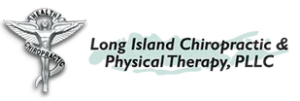ART Active Release Technique

ART is a patented, state of the art soft tissue system/movement based massage technique that treats problems with muscles, tendons, ligaments, fascia and nerves. Headaches, back pain, carpal tunnel syndrome, shin splints, shoulder pain, sciatica, plantar fasciitis, knee problems, and tennis elbow are just a few of the many conditions that can be resolved quickly and permanently with ART. These conditions all have one important thing in common: they are often a result of overused muscles.
WHO GETS ART?
- All professional Teams have a Chiropractor providing ART including most NFL, NHL, MLB, NBA, Olympic Athletes
- College, High school athletes
- Car and Work injuries
- Anyone with muscle, tendon, ligament and nerve pain
How do overuse conditions occur?
- Over-used muscles (and other soft tissues) change in three important ways:
- Acute conditions (pulls, tears, collisions, etc),
- Accumulation of small tears (micro-trauma)
- Not getting enough oxygen (hypoxia)
Each of these factors can cause your body to produce tough, dense scar tissue in the affected area. This scar tissue binds up and ties down tissues that need to move freely. As scar tissue builds up, muscles become shorter and weaker, tension on tendons cause tendonitis, and nerves can become trapped. This can cause reduced range of motion, loss of strength, and pain. If a nerve is trapped you may also feel tingling, numbness, and weakness.
How is ART treatment performed?
Every ART session is actually a combination of examination and treatment. The ART provider uses his or her hands to evaluate the texture, tightness and movement of muscles, fascia, tendons, ligaments and nerves. Abnormal tissues are treated by combining precisely directed tension with very specific patient movements.
These treatment protocols – over 500 specific moves – are unique to ART. They allow providers to identify and correct the specific problems that are affecting each individual patient.
What can you expect after ART a treatment?
- Increase Range of Motion
- Decrease Pain
- The first 2 treatments you can have post soreness the next day
- Typical treatments consist anywhere from 4-12 visits (If there is not 50% improvement than you will need an additional type of treatment)
(If there is soreness apply ice for 20 minutes)
Number of treatments necessary depend upon:
- Severity of the injury
- Age
- If there is continued repetitive stresses on injury
- Ability to rest injury
- Performing exercises and stretches at home
- Proper nutrition
- Maintenance treatment can help injury from returning (1-2 x per month)
ART works primarily to eliminate scar tissue build-up from within soft tissue structures. For example, with overuse injuries, although there is no single noticeable event that causes a muscles tear, small tears occur over the course of a long period of time. The body naturally heals these tears by using fibrous scar tissue. The problem with scar tissue is that when it is used by the body it is laid down in an unorganized, haphazard fashion, causing various adjacent structures to stick together. Active Release Techniques® has proven itself to be efficient at “un-sticking” these muscles and releasing scar tissue. For this reason, many ART® providers can claim success rates upward to 90% in patients who have not found success from any other therapies, such as physical therapy, chiropractic, strength training, and stretching. All of these types of therapies are excellent in combination with Active Release Techniques®, but in some cases when used on their own only provided limited pain relief, here’s why.
Consider a paint brush as an example. A normal muscle and its fibers should be able to move independently of the other soft tissue structures surrounding it. When paint is left on the brush overnight all of the fibers tend to stick together. Soft tissue adhesions or fibrosis are essentially this, when muscle fibers stick to each other and other structures around it (other muscles, tendons, ligaments, nerves etc.). Muscles cannot and will not function properly in this state and pain is one of the symptoms people may experience when enough build-up has accumulated. Fact is stretching will never release the scar tissue, which is several times stronger than normal tissue. Stretching and other types of non-operative treatment become successful after the scar tissue is released with Active Release Techniques®.
